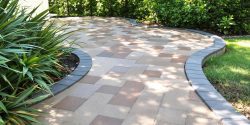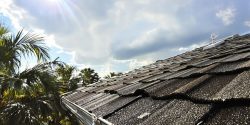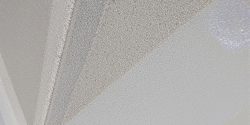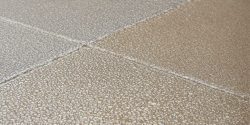Essential Tips for Bathroom Remodeling in Humid Conditions
Planning a bathroom remodel in a place with lots of humidity? We get it. Moisture is a big problem in these areas, and it can really mess with your home if you’re not careful. We’ve put together some tips to help you get it right, from the floor up to the roof. Let’s make sure your new bathroom can handle the damp air without falling apart. We’ll cover materials, airflow, and even what’s going on overhead.
Key Takeaways
- When remodeling bathrooms in humid places, pick materials that don’t soak up water. Think waterproof flooring and wall coverings made for damp conditions.
- Good ventilation is super important. We need to get that moist air out. Think about installing a strong exhaust fan and maybe opening windows when you can.
- Don’t forget the roof, especially when thinking about roofing solutions for humid climates. Pick tough materials and make sure everything is sealed up tight to keep water out.
Prioritizing Moisture Resistance in Materials

When we remodel bathrooms, especially in places where the air stays damp, picking the right materials is a big deal. We need things that can handle moisture without falling apart or getting moldy. It’s not just about looks; it’s about making sure the bathroom lasts and stays healthy.
Selecting Waterproof Flooring Options
For floors, we really need to think about what can stand up to water. Spills happen, and humidity means there’s always moisture in the air. We look at materials like luxury vinyl plank (LVP) or tile. LVP is great because it’s made of layers, and the top vinyl layer is waterproof. It also clicks together, so water doesn’t easily seep through to the subfloor. Ceramic and porcelain tiles are also solid choices. They don’t absorb much water themselves, but the grout between them can be a weak spot. We make sure to use a good quality, waterproof grout sealer. We also consider the installation; a proper subfloor preparation and adhesive are key to preventing water damage from below.
Choosing Humidity-Resistant Wall Coverings
Walls in a humid bathroom need protection too. Paint is a common choice, but not all paint is equal. We prefer to use paints with a satin or semi-gloss finish. These finishes create a harder surface that’s less likely to absorb moisture compared to matte finishes. For even better protection, we sometimes use specialized bathroom paints that have mildew-resistant additives. Another good option is tile. Like on the floor, tile is very water-resistant. We can tile the entire shower area, or just the lower half of the walls to protect them from splashes. Wallpaper can be tricky; if we use it, we make sure it’s vinyl or a material specifically designed for bathrooms, and we still apply a primer and sealant to the wall first. The goal is to create a barrier that stops moisture from getting into the wall structure.
We always check the manufacturer’s recommendations for any material we use, especially regarding its suitability for high-humidity environments. This helps us avoid problems down the line.
Ensuring Proper Ventilation and Airflow
When we remodel bathrooms in areas with high humidity, we really need to think about how we move air around. It’s not just about making the space look good; it’s about keeping it healthy and preventing problems down the line. Good ventilation stops mold and mildew in their tracks, which is a big deal in damp climates.
Installing High-Capacity Exhaust Fans
We always recommend installing exhaust fans that are powerful enough for the bathroom size. A fan that’s too weak just won’t do the job. Look for fans with a high CFM (Cubic Feet per Minute) rating. The general rule of thumb is one CFM per square foot of bathroom space, but for humid areas, we often suggest going a bit higher. It’s better to have a fan that can clear the air quickly. Make sure it’s vented directly outside, not just into the attic. We also like to install them on a timer or a humidity sensor so they run automatically when needed. This takes the guesswork out of it for homeowners.
Considering Natural Ventilation Strategies
Beyond fans, we look at how we can use natural airflow. If your bathroom has a window, great! We make sure it’s functional and easy to open. Sometimes, we can even add a second window or a skylight that opens. Cross-ventilation is key – getting air to move through the room. We might suggest installing a small, louvered vent near the floor and another higher up, if the layout allows. This creates a natural draw. Even a well-placed ceiling fan can help circulate air, though it doesn’t remove moisture like an exhaust fan does. It’s all about creating pathways for that damp air to escape and fresh air to come in.
Addressing Potential Roofing Solutions for Humid Climates
When remodeling a bathroom in a humid climate, we often forget about the roof. It’s the first line of defense against moisture, and if it’s not up to par, all our other efforts can go to waste. We need to think about what materials will hold up best when things get steamy.
Evaluating Durable Roofing Materials
We should look at roofing materials that can handle constant moisture without breaking down. Things like metal roofing, especially standing seam styles, are a good bet. They don’t rot or get damaged by water like some other materials might. Asphalt shingles can work, but we need to make sure they are rated for high humidity and are installed correctly. Some newer composite shingles also offer good resistance. We want something that won’t degrade quickly under constant dampness.
Implementing Effective Sealing Techniques
Beyond the material itself, how we seal the roof is just as important. We need to pay close attention to flashing around vents, chimneys, and any other penetrations. Using high-quality sealants and membranes is key. We should also consider a good underlayment that provides an extra layer of protection against water getting in. Proper sealing prevents those small leaks that can turn into big problems over time. It’s about creating a solid barrier against the elements, especially when the air is thick with moisture.
We need to be mindful of:
- Checking existing roof conditions before starting.
- Using sealants specifically designed for humid environments.
- Ensuring all seams and edges are properly overlapped and sealed.
- Considering ventilation for the attic space, which also helps the roof system.
Wrapping Up Your Bathroom Project
So, we’ve gone over a few things that can help when you’re fixing up a bathroom, especially if it gets pretty steamy in there. Picking the right materials really makes a difference, and we talked about how important good ventilation is. It might seem like a lot to think about, but taking these steps now can save you headaches later. We hope these pointers give you a good start on your own bathroom remodel. Good luck with your project!
Frequently Asked Questions
What are the best materials to use in a bathroom that gets very damp?
When remodeling a bathroom in a damp area, we must pick materials that don’t soak up water easily. Think about tiles or vinyl for the floor, as they don’t get ruined by moisture. For walls, we suggest using special paint or tiles instead of wallpaper, which can peel off when it’s too wet.
How can we make sure our bathroom has enough fresh air?
Good airflow is super important to keep moisture away. We recommend getting a strong fan that can pull out all the steamy air quickly. Opening a window when possible also helps a lot. Making sure air can move around prevents mold and keeps things dry.
What kind of roof is best for a place with a lot of humidity, and how do we keep it from leaking?
For the roof, we need to choose materials that can handle lots of rain and humidity without breaking down. Things like metal or certain types of shingles are good choices. We also need to seal up any gaps really well to stop water from getting in and causing problems.




